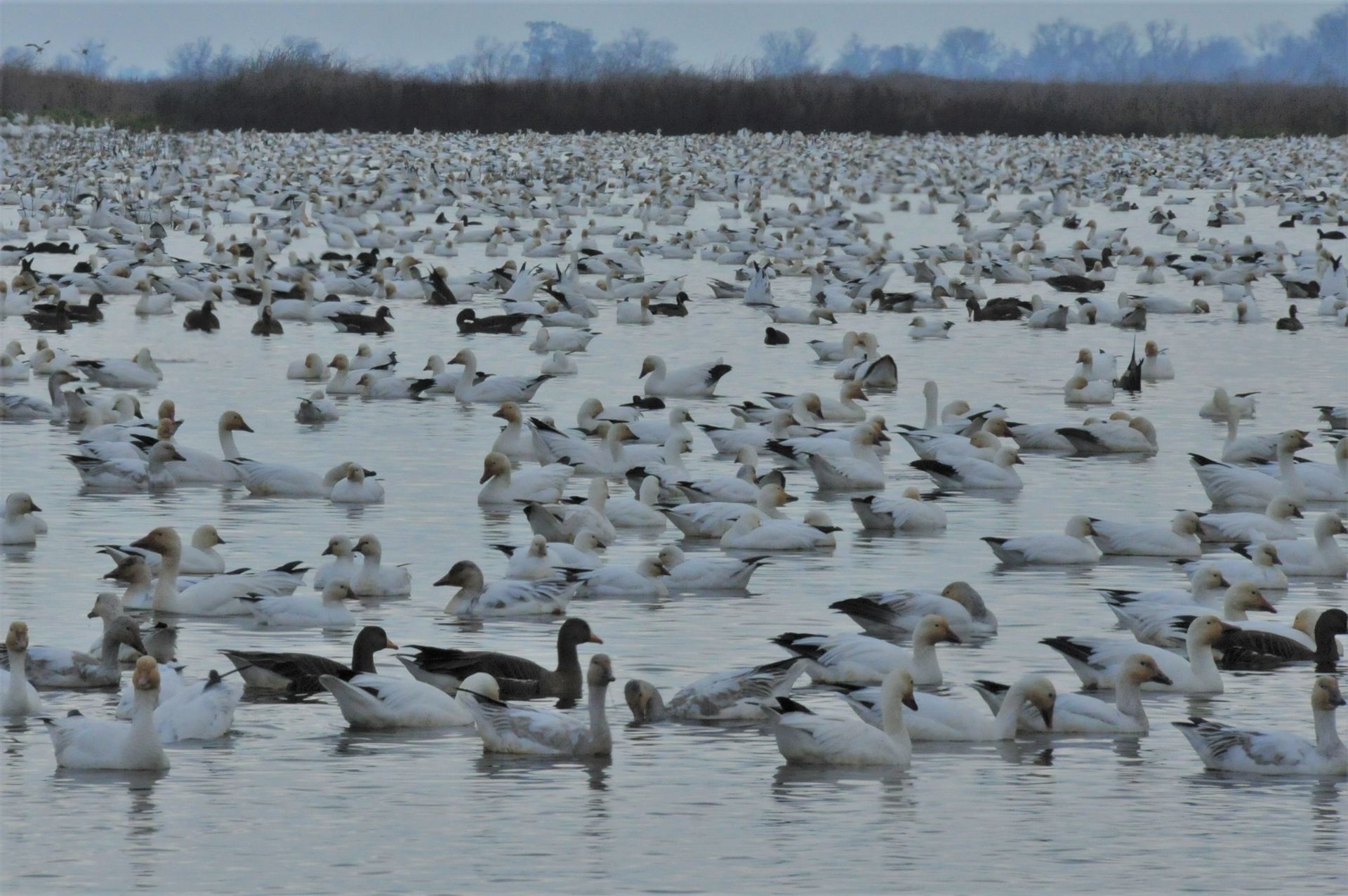Enjoying Outside, Inside - Wintertime Waterfowl Watching

If you’ve lived in the Sacramento Valley for at least one winter, you’ve probably noticed the sheer abundance of waterfowl that call the rice fields, bypasses and pastures home from fall to late winter. Driving north on Highway 99 just past Sacramento, you might have seen the ocean of striking little white heads attached to long necks busily doing geese things in one of the harvested rice fields. Or the darker, round heads attached to shorter necks happily chattering with each other. Or maybe you’ve even seen, or heard, them flying high above, during the day and at night.
Migrating birds use four major north-south migratory routes: the Pacific, Central, Mississippi and the Atlantic Flyways. Our region is part of the Pacific Flyway which also includes Alaska, Arizona, Idaho, Nevada, Oregon, Utah, Washington and the parts of Colorado, Montana, New Mexico and Wyoming that occur west of the Continental Divide south to Patgonia, South America. Some birds stop here for the season while others only hang out for a few days to rest and refuel for the remainder of their migratory journey.
Driving by from the road you can tell they’re ducks and geese with maybe some shorebirds or gulls mixed in. But, from a distance, how do you know what species they are? Learning how to identify them isn’t hard and you can learn the basics from home using your computer and a field guide and then take that knowledge outside with you and test it out. Studying websites and photos will help you identify ducks by getting you familiar with telltale signs. Bird enthusiasts, watchers and hunters, use many different clues including size, shape, plumage and colors, behavior, sound, even wing beat to identify which species they’re looking at. How they behave in flocks in flight and how deep the water they’re sitting in are also clues. For instance, there are two categories of ducks based on how and what they eat; dabbling ducks and diving ducks. Diving ducks do just that, they dive completely under the water using their short wings and legs that are set farther back on their bodies to help propel them down and through the water column. Their bills are longer and narrower to help them catch fish or flat to help them get clams and other invertebrates from the bottom. Dabbling ducks are ducks that tip forward to eat from the surface or off the shallow bottom; you can often see their tail feathers sticking out of the water while their heads are under. Their bills are flatter to help them sift out the yummy bits and their legs are centrally located on their body to help with mobility both on land and in the water. Their wings are longer to help them take off and land with precision. These are all things you can learn from home and use to identify when you see them in the field. Ducks Unlimited has a great online photo guide to help you get familiar with dabbling ducks and diving ducks as well as other waterfowl. The United States Fish and Wildlife Service also has a great online resource to help learn what you’re looking for.
Also very helpful to field identification is simply learning what species are likely to be in the Central Valley during the colder winter months. Looking at current and past survey results can help you get a clue as to what to expect to be wintering here. The United States Fish and Wildlife Service conducts regular bird counts on their refuges. Recent and past results can be found on their website. Getting involved in the Audubon Society’s annual Christmas bird count is also a great way to learn from experienced birders as well as share data.
Once you’re pretty confident that you can tell a snipe from a brant, head up Highway 99 to the rice fields just past Natomas, the Yolo bypass outside of Davis, or one of the National Wildlife Refuges in the region and test what you’ve learned at home. Or, test your waterfowl identification skills up close and join Tuleyome for a tour of the Woodland Regional Park Preserve as the ponds fill up with and attract a growing number of waterfowl! Be sure to bring binoculars and a field guide, Sibley is a great one and was a book recommendation in our last Eblast!
Here is some great information on birding and the wildlife refuges and a wonderful article about migrating waterfowl.
Seeing a field of thousands of Snow and White-fronted Geese is utterly amazing and definitely one of the highlights of winter in the
Central Valley. Don’t miss it, they’re only here for a little while! And check out this Science Corner article to learn more about Snow Geese!
-Krisie Ehrhardt; kehrhardt@tuleyome.org
Tuleyome Land Conservation Program Manager
RECENT ARTICLES






